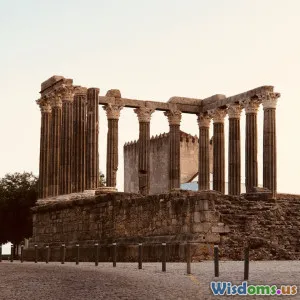
Archaeological Mysteries That Still Baffle Experts
6 min read Uncover ancient mysteries that challenge our understanding of civilization with this engaging exploration of archaeological enigmas. (0 Reviews)
Archaeological Mysteries That Still Baffle Experts
The field of archaeology is a fascinating window into our past, revealing the lives, cultures, and accomplishments of ancient civilizations. However, despite the vast knowledge we have gained, there remain many archaeological mysteries that continue to baffle experts. This article delves into some of the most perplexing enigmas from ancient times, exploring their significance and the theories that surround them.
1. The Lost City of Atlantis
Perhaps one of the most famous archaeological mysteries is the legend of Atlantis, a supposedly advanced civilization that sank into the ocean. First mentioned by Plato in his dialogues, Atlantis was described as a powerful kingdom that existed around 9,000 years before his time. Many explorers and archaeologists have attempted to locate its remnants, but no conclusive evidence has been found. Various theories abound, suggesting locations ranging from the Mediterranean to Antarctica. The enduring intrigue surrounding Atlantis reflects humanity's fascination with lost civilizations and the quest for understanding our origins.
2. The Nazca Lines
In the arid plains of southern Peru, the Nazca Lines present another compelling mystery. These enormous geoglyphs, depicting animals, plants, and geometric shapes, can only be fully appreciated from the air. Created by the Nazca culture between 500 BCE and 500 CE, the purpose of these lines remains unclear. Some researchers propose that they served as astronomical calendars, while others suggest they were related to religious practices. The scale and precision of the Lines continue to puzzle archaeologists, raising questions about the capabilities and intentions of the Nazca people.
3. Stonehenge: A Celestial Observatory?
Stonehenge, located in Wiltshire, England, is one of the most recognizable prehistoric monuments. While it is widely believed to have been a burial site, its full purpose is still a subject of debate. Recent research suggests that Stonehenge may have also functioned as an ancient astronomical observatory, aligning with the movements of the sun and moon. The intricate construction techniques and the effort required to transport massive stones from distant quarries indicate a sophisticated level of organization and knowledge among the builders. Yet, the precise reasons for its construction continue to elude archaeologists.
4. The Voynich Manuscript
The Voynich Manuscript is an enigmatic book filled with illustrations and text written in an unknown script. Discovered in 1912, this 15th-century manuscript has stumped cryptographers, linguists, and historians alike. Despite numerous attempts to decode the text, no one has succeeded, leading some to speculate that it could be a hoax or an elaborate cipher. The manuscript's botanical illustrations and astrological diagrams suggest a connection to medieval science and alchemy, but without understanding the language, its true purpose remains a mystery.
5. The Pyramids of Egypt: Builders and Techniques
The Great Pyramids of Giza are an enduring symbol of ancient Egypt, but the methods used to construct these monumental structures remain a topic of debate. While it is accepted that the pyramids were built as tombs for pharaohs, the logistics of moving massive stone blocks and the tools used are still not fully understood. Recent discoveries, including ancient papyrus documents, have provided insights into the workforce and techniques used, yet many questions remain. How were the precise alignments achieved? What motivated the massive labor force? These questions continue to inspire research and exploration.
6. The Indus Valley Civilization's Script
The Indus Valley Civilization, one of the world's earliest urban societies, was known for its advanced cities and sophisticated sanitation systems. However, the script of the Indus Valley remains undeciphered. Despite the discovery of thousands of seals and inscriptions, no one has been able to understand the language. This lack of understanding hampers our knowledge of their culture, trade, and societal structure. The Indus script's complexity challenges linguists and archaeologists, inviting ongoing investigation into what may be one of the oldest forms of written communication.
Conclusion
The mysteries of ancient civilizations remind us of the vast and intricate tapestry of human history. While technology and research methods evolve, some enigmas remain unsolved, sparking curiosity and inspiring future generations to explore the past. As we continue to uncover remnants of these ancient cultures, we may eventually find answers to these compelling questions, deepening our understanding of humanity's journey through time. The allure of the unknown keeps archaeology alive as a dynamic field that not only seeks to uncover the truth but also enriches our appreciation of the complexities of our ancestors.
Rate the Post
User Reviews
Other posts in Indus Valley Civilization
Popular Posts















